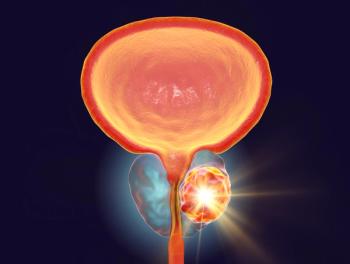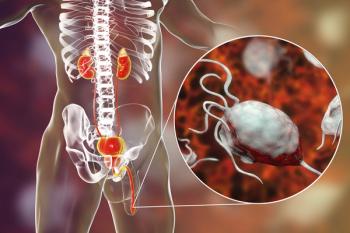
Oncology NEWS International
- Oncology NEWS International Vol 7 No 8
- Volume 7
- Issue 8
ProstaScint Scintigraphy May Alter Therapeutic Management of Prostate Cancer
TORONTO--Preliminary data on patients with rising prostate-specific antigen (PSA) levels after radical prosta-tectomy suggest that ProstaScint scin-tigraphy may offer a way to identify patients most likely to benefit from radiation therapy. ProstaScint (capromab pendetide) is an indium-111-labeled murine monoclonal antibody diagnostic agent that attaches to the prostate-specific membrane antigen.
TORONTO--Preliminary data on patients with rising prostate-specific antigen (PSA) levels after radical prosta-tectomy suggest that ProstaScint scin-tigraphy may offer a way to identify patients most likely to benefit from radiation therapy. ProstaScint (capromab pendetide) is an indium-111-labeled murine monoclonal antibody diagnostic agent that attaches to the prostate-specific membrane antigen.
"In patients with localized disease, the most effective therapy is radical prostatec-tomy," said Bennett Chin, MD, Department of Radiology, Johns Hopkins Medical Institutions. However, he pointed out, there is a relatively high incidence of tumor recurrence. "We wanted to see if distant metastases could be detected in patients who recur after surgery, to more appropriately select patients who could benefit from standard radiation therapy," he said at the 45th annual meeting of the Society of Nuclear Medicine.
The study included 63 prostate cancer patients with elevated PSA levels (median, 1.25 ng/mL; range, 0.13 to 209 ng/mL) after prostatectomy. Patients were examined via single-photon emission computed tomography (SPECT) analysis 96 hours after injection of ProstaScint. A second SPECT analysis at 120 hours postinjection was optional.
Of the 63 patients, 44 (70%) had abnormal SPECT scans. Five of these 44 (8%) had abnormal uptake in the prostate fossa and 39 (62%) had abnormal uptake outside of the prostate fossa, including distant lymph nodes. In addition, 10 patients (16%) had metastatic disease in the para-aortic region without evidence of pelvic lymph node involvement, also known as "skip metastases."
"Although follow-up confirmation is required, these preliminary data suggest that indium-111 ProstaScint scintigraphy may identify metastatic disease outside of the prostate region. Those men with distant cancer recurrence may not benefit from conventional radiation therapy and may be spared this unnecessary treatment and its adverse side effects," Dr. Chin said.
Articles in this issue
over 27 years ago
Taxol, Gemzar, Other Therapies Studied in Metastatic Bladder Cancerover 27 years ago
Medicare+Choice Opens Certificationover 27 years ago
Consumer Advocates Win a Voice in NCI Programsover 27 years ago
Paclitaxel Shows Antiangiogenesis Effects in Mouse Modelover 27 years ago
Henney Nominated for FDA Commissionerover 27 years ago
FDA Approves ImageChecker Computer Systemover 27 years ago
Pittsburgh Seeks Breast Cancer Patients for Study on Copingover 27 years ago
Octreotide Imaging Improves Staging of Hodgkin’s Diseaseover 27 years ago
Tobacco Contributions Are Linked to Votes Against Tobacco BillNewsletter
Stay up to date on recent advances in the multidisciplinary approach to cancer.
















































































